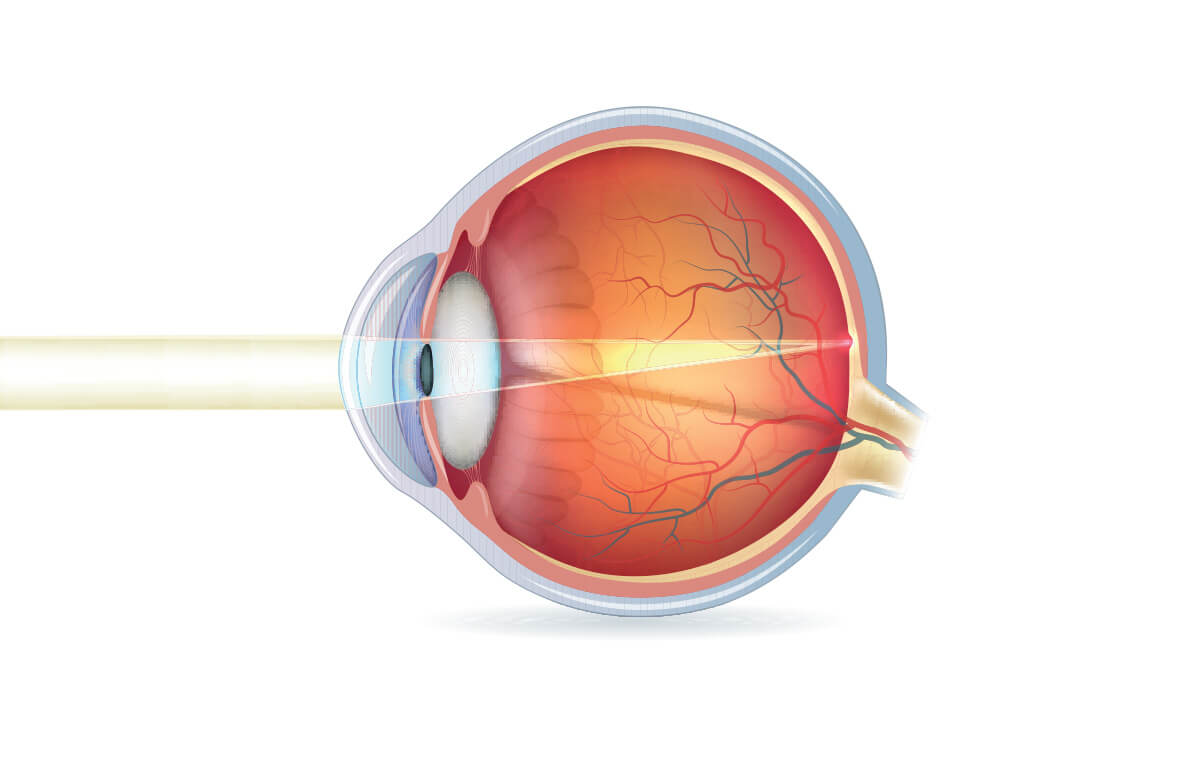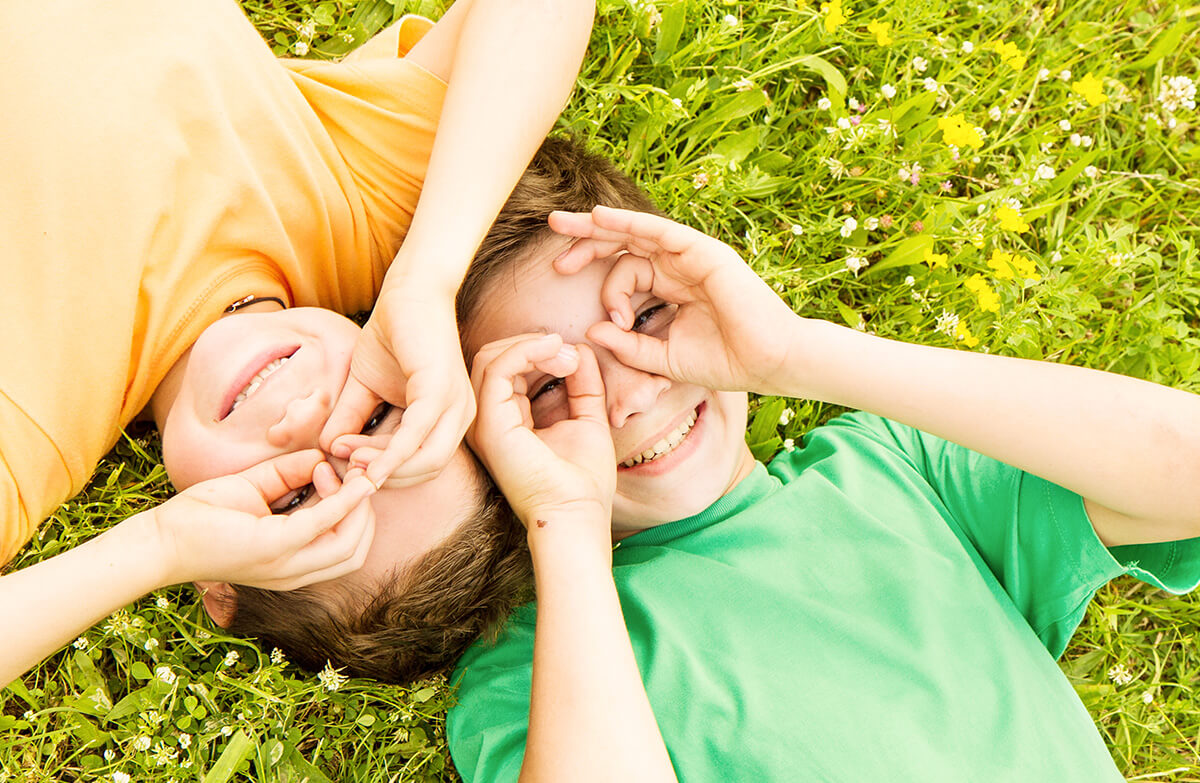Myopia and Eye Health
Childhood is an important time to think about myopia because myopic children tend to become more myopic over time. The age of onset of myopia is one of the most important predictors of severe myopia later in life. With high myopia the risk of developing potentially sight-threatening complications such as Glaucoma, Retinal Detachment and Cataracts later in life increase exponentially (as seen in the chart below)
| Emmetropia = 1x | Cataract | Glaucoma | Retinal Detachment | Macular Degeneration |
| -1.00 to -3.00 | 2 x | 4 x | 4 x | 2 x |
| -3.00 to -6.00 | 3 x | 4 x | 10 x | 41 x |
| -6.00 or greater | 5 x | 4 x | 16 x | 126 x |
Potential Complications
Retinal detachments – where the tissue at the back of the eye detaches from the eyeball.
Myopic macular degeneration – degeneration of the area responsible for sharp vision.
Glaucoma – degeneration of the optic nerve responsible for transmitting signals from the eye to the brain
Cataract – the lens in the eye that is responsible for focusing becomes cloudy.
It is important to note that the risk of these complications increase with age and are more likely to occur with higher amounts of myopia. These conditions can often be treated but do pose a risk for permanent vision loss.


Clinical research has demonstrated that we can slow the increase in myopia in children safely and effectively using optical and pharmaceutical treatments.
| Types of vision correction | Effects on slowing myopic progression |
| normal glasses and standard contact lens | 0-5% |
| progressive and multifocal lens | 12 – 55% |
| MyoVision™ Lenses | 0 – 30% |
| Miyosmart Lenses | 60% |
| MiSight Contact Lenses | 59% |
| Atropine Drops | 50 – 80% |
| Orthokeratology | 40 – 90 % |
| Essilor Stellest Lenses | 67 % |
Treatment Options
Miyosmart Lenses
The Miyosmart lenses are a new spectacle lens designed by Hoya to help slow down the progression of myopia. This myopia control lens uses a breakthrough technology called D.I.M.S (Defocus Incorporated Multiple Segments) where the central portion of the lens contains the full glasses prescription allowing for clear vision and the periphery is surrounded by several defocus segments. These segments alter the peripheral focus of light along the back of the eye in such a way that it signals to the eye to slow down its growth.
Based on a 2-year clinical trial published in the British Journal of Ophthalmology, the Miyosmart lens was shown to reduce both myopia progression and axial length (length of the eyeball) by 60% compared to children wearing single vision glasses lenses. Learn More with Dr. Jessica
Essilor Stellest Lenses
The Essilor Stellest lenses are the newest spectacle lens designed to help slow down the progression of myopia. This lens is a unique constellation of lenslets that help create a signal to slow down eye elongation and myopia progression. In a two-year clinical trial, the Stellest lens showed reduced myopia progression by 67% and the eye growth of 9/10 children wearing the lens was similar to or slower than non-myopic children. Ask our Optometrists if the Stellest lens is right for you and/or your child.
MyoVision Lenses
MyoVision is a ZEISS lens designed to provide sharp vision while managing peripheral blur. Learn More
Soft or Hard Multifocal Contact Lenses
Interested in multifocal contact lenses? Soft or hard multifocal contact lenses cause the peripheral vision to blur in order to slow down the progression of Myopia. These contact lenses focus light in front of the retina and slow the growth of the eye. Multifocal lenses are worn every day during the day and not at night.
Atropine Drops
Atropine drops are a pharmaceutical eye drop that has shown potential to slow down the progression of Myopia. Low dose Atropine has minimal effects on pupil dilation causing light sensitivity, less accommodation (ability to focus at near objects), and near vision. This is a great option for patients who are not candidates for Orthokeratology, or for younger patients.
Brilliant Futures™ MiSight® 1 day Lenses
MiSight® 1 day is the first soft contact lens to slow down the progression of myopia. It is a daily disposable lens which has show to slow down myopia progression by 59%. Learn More in our video with Dr. Jessica. Read More
Orthokeratology
Looking for contact lenses for nearsightedness? Orthokeratology uses customized contact lenses for corneal reshaping of the eye to improve vision. Orthokeratology is a non-surgical and reversible way to reshape the cornea. It’s a great alternative to LASIK or PRK for those reluctant or unable to undergo laser refractive surgery and looking for an alternative to wearing glasses or contacts during the day. Orthokeratology is the optical equivalent of dental braces. A retainer lens is worn overnight while sleeping and gently molds or reshapes the cornea thus creating a sharpened image upon awakening. The cornea retains its shape during the day and good vision is maintained all waking hours. The process is repeated each night, although some find they only need to wear their molds on alternate nights. According to the foregoing table, studies show that Orthokeratology has been the most effective method for reducing and slowing the progression of Myopia, particularly for those whose eye prescription is below -5.00D. Learn More with Dr. Jessica
Environmental Modifications
Some studies show that changing day-to-day activities can naturally help decrease the severity of Myopia. Suggestions include:
- going outside more often (walk or participate in other outdoor activities) for a minimum of 2 hours correlates with later onset and a reduction in Myopia, Read more
- taking breaks from the computer screen and following the 20/20/20 rule (looking 20 feet away for 20 seconds every 20 minutes),
- keeping a good working distance of 16 inches for adults and 12-13 inches for younger children when working up close (Harmon’s distance).
- keeping a good working distance of 16 inches for adults and 12-13 inches for younger children when working up close (Harmon’s distance).
- encourage healthy sleep habits such as going to bed early, reducing bright light exposure prior to bedtime, and getting the recommended 9-11 hours per night in school-age children. Read more
- high levels of digital smart device usage were associated with almost a 30% higher risk of myopia. This risk increased to nearly 80% when excessive computer screen time was combined. This research highlights the importance of monitoring digital device usage in children for ocular health and myopia management. Read more
A friendly reminder for our parents for kids:A. Ages 0-2 no screen time (exception video chatting with parental supervision)B. Ages 2-5 no more than 1 hour per dayC. Ages 5-18 no more than 2 hours per day
References:
Padmaja Sankaridurg, PhD, BOptom, MIP, Review of Optometry, February 2017
Saraswathi Eye Hospital. http://high-myopia-eye-hospital.com/low-myopia/
https://www.clspectrum.com/issues/2014-march-2014-contact-lens-design-materials

 587-353-5061
587-353-5061 Email Us
Email Us










 587-353-5061
587-353-5061